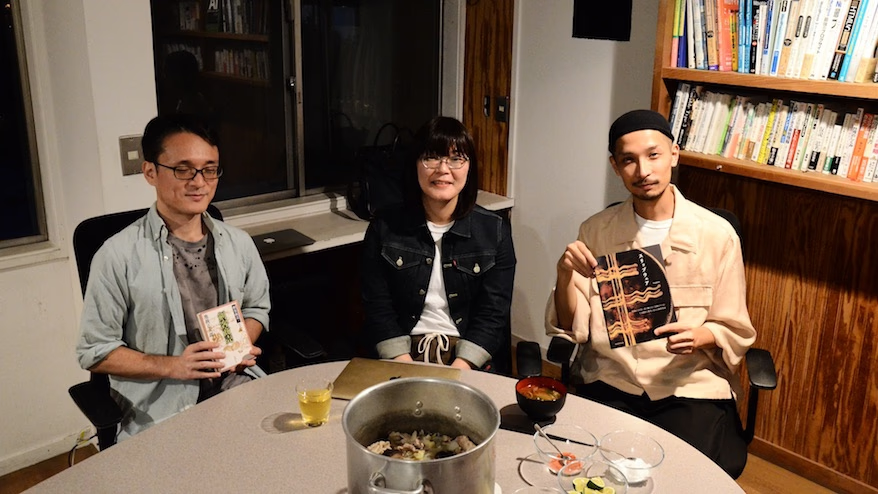Autumn is definitely in the air. The mornings and evenings are chilly, but before you know it, you're eating more and more. Yes, the "autumn appetite" has arrived!
So, this month's theme is "books with food in them." Following on from last year , this is a fun project where you can actually try the dishes that appear in the books! Just imagining it gets you excited, doesn't it?
So, what kind of dishes will be prepared?
After finishing work for the day, the three members gathered. This time, Omura from the editorial department was in charge of cooking. Normally, the reading group proceeds with a "stomp" but today, we wanted to enjoy it while "munching" as well.
Now, let's arrange the finished dishes on the table and start the dining hall reading group!
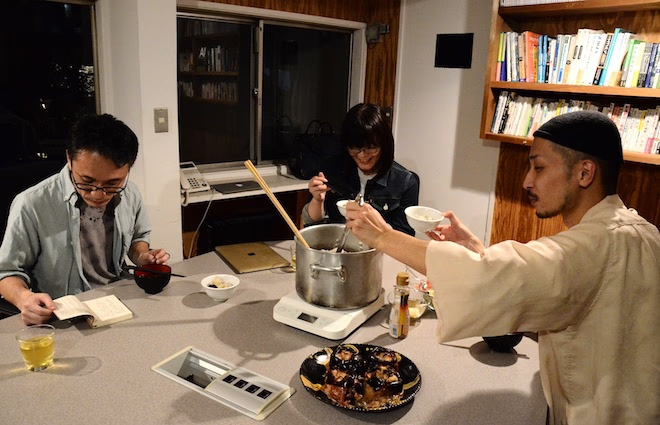
Books to be introduced this time
- "Swordsman Business" by Shotaro Ikenami, published by Shinchosha
- Kappa Seno (author) "Kappa's Sketchbook" Bungeishunju
- Seibundo Shinkosha (ed.) "Slipware" Seibundo Shinkosha
I eat green onion miso soup in silence every morning and night.
"Swordsman Business" by Shotaro Ikenami

- Introduced by: Isamu Murakami
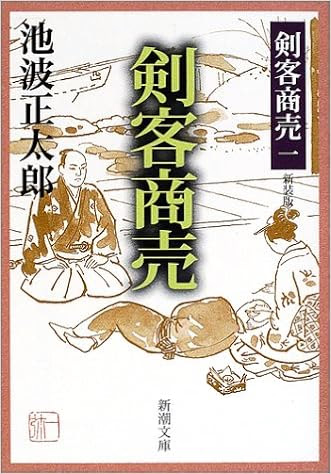
Shotaro Ikenami (author) "Swordsman Business" Shinchosha (September 1, 2002) ( Amazon )
This is "Kenkaku Shobai" by Shotaro Ikenami, a famous historical novel. Food often appears in Ikenami's novels, and in this story, Nebukajiru (root soup). Nebuka means green onion, so it is miso soup with only green onion as an ingredient.
The main characters are a father and son who make their living as swordsmen in the mid-Edo period. At the beginning, the son, who has just become independent, is alone in an empty dojo, gazing out the window when the smell of cooking wafts from the kitchen. He asks the wife of a neighbor to cook him some rice, and she makes nebuka soup, barley rice, and radish pickles. They eat it every day, without getting bored. It's probably not particularly tasty, but they've always wondered about this miso soup. They're happy to be able to eat it today.
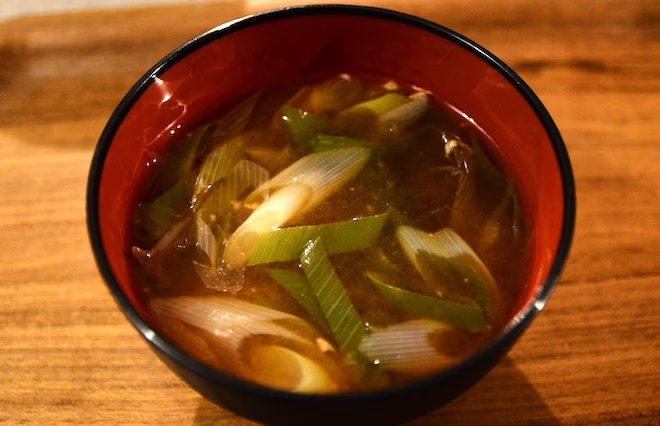
Nebuka soup (green onion miso soup)
At first, I couldn't connect the words "swordsmanship" and "business," but it all made sense when the father told his son, "It's been more than 100 years since the world was at peace, and to make a living by swordsmanship, you need more than just physical strength; you need to think of swordsmanship as a business." It's an interesting title, isn't it?
Although this is the first in a series, there aren't many lines and the story progresses using simple words. This is a novel that gives off such a pleasant feeling.
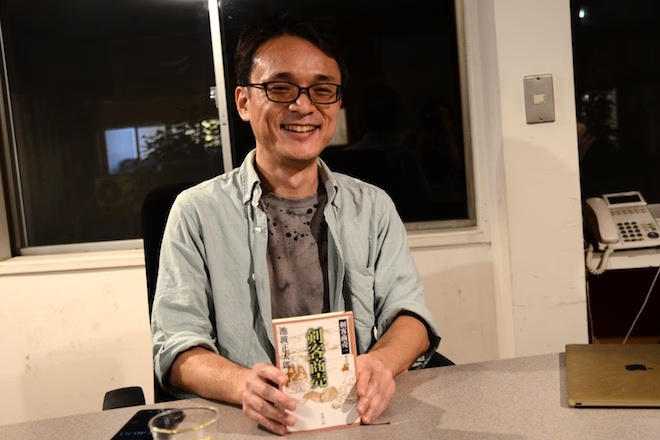
 Standing side
Standing sideIs this a breakfast scene?
 Murakami
MurakamiNo, maybe it was dusk. But it seems like he eats the same menu every morning and evening. He chews and swallows the nebuka soup, barley rice, and pickled radish. The same thing over and over again...
 Haga
HagaI've heard that people in the past only had two meals a day.
 Murakami
MurakamiThat's right. The economy developed during the mid-Edo period, so wealthy people may have only had three meals a day.
This delicious hotpot is a must-have in the winter.
Kappa's Sketchbook by Senoo Kappa

- Introduced by: Ayumi Tatewaki

Seno Kappa (author) "Kappa's Sketchbook" Bungeishunju (1999/07) ( Amazon )
The cover of "Kappa's Sketchbook" is impressive. The author, Seno Kappa, is a stage designer and is very good at drawing. I was already hooked from the cover. I've always loved researching useless things and trivia, and this essay is no exception. Among the various strange things that appear, such as Indian lunch boxes, "Pienro Nabe" appears as a winter hotpot.
When the cold season comes around, friends at the Seno family make roundabout requests for Pyeonro hotpot. Ever since I first read about it, I've wanted to try it, so I had my parents make it for me, but it was a bit bland and a bit strange (lol). Today's was creamy and delicious! I thought, "This is it!"
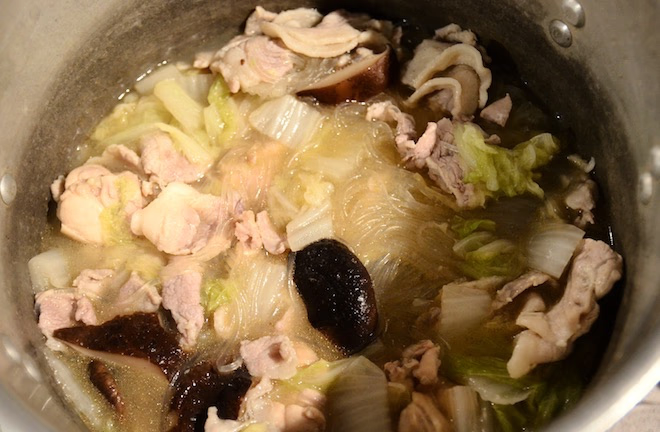
Pyenro hotpot
I learned about this hot pot from someone who lived in China for a long time, and apparently "Pian" means modest or simple. The ingredients are very simple, and you can add seasonings of your own choosing, such as coarse salt or chili pepper. Many Japanese hot pots are already seasoned, but it's interesting to be able to decide on the flavor yourself.
As the title suggests, this is a really interesting book that introduces various things through pictures and text. It seems to be out of print, but I recommend it.
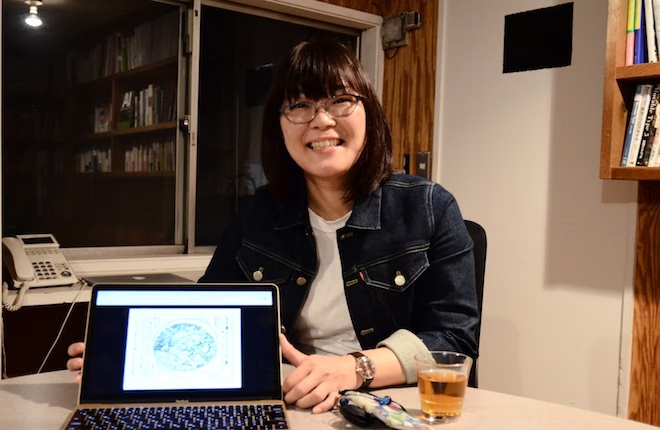
 Murakami
MurakamiAre the ingredients in today's hot pot the same as in the book?
 Standing side
Standing sideYes, Chinese cabbage, pork belly, glass noodles, shiitake mushrooms... When I first read about it, it was pretty obscure, but it seems to have become more well-known recently after being featured in the media.
 Haga
HagaIt's delicious, and adding salt gives it a nice kick!
 Standing side
Standing sideThe book says, "Wait until it gets really cold and the Chinese cabbage is delicious." Also, this hotpot is not something you eat quietly with two people (laughs). It's supposed to be eaten lively with a large group of people.
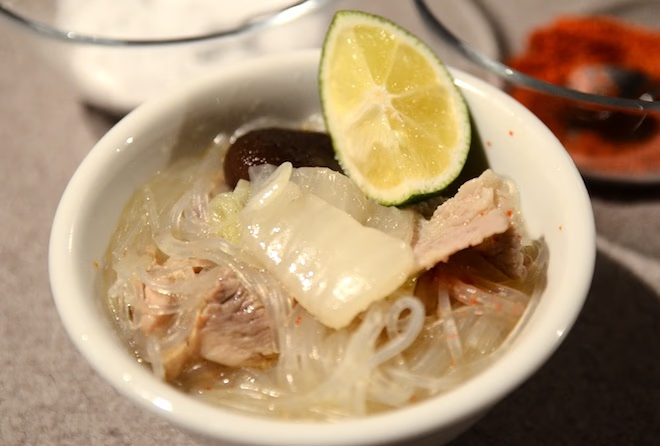
Each person can add salt and chili pepper to taste. This time, we added Kamiyama sudachi citrus.
Bold and free, each piece is unique in its own way.
Seibundo Shinkosha (ed.) "Slipware"

- Introduced by: Keisuke Haga

Seibundo Shinkosha (ed.) "Slipware" Seibundo Shinkosha (2016/1/13) ( Amazon )
I brought along a book about pottery called "Slipware." Slipware is a technique of creating patterns by dripping slip onto the base of a piece of pottery, which developed mainly in England in the 18th and 19th centuries. I like bold patterns, and I have several pieces of slipware myself.
In a photo in a book, there was something like a dessert on a slipware plate. I thought it was an apple, so I requested baked apples. The dish was a slipware that I own, a work by the ceramicist Juba Tenshin . I like the slightly larger size and the bold pattern.
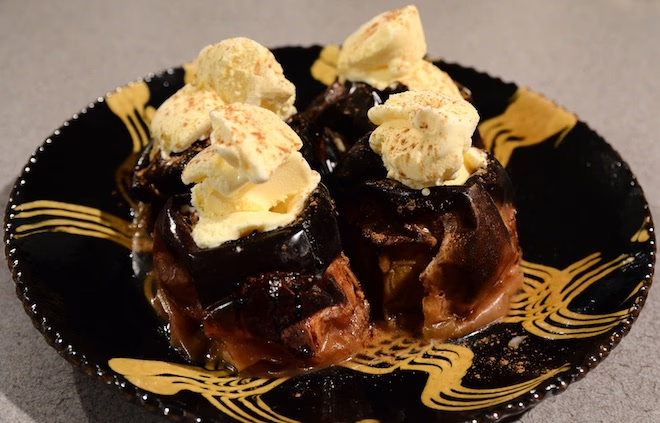
Toba Tenshin's pottery (this time, the apples are a little overcooked...)
There are many different patterns on slipware, from those that are painted in an instant like this plate, to those that are painted by flowing or scratching. Personally, I like the bold and free-spirited designs. Another appeal is that each piece is unique.
The book also contains instructions on how to make tableware, and the number of shops that actually hold workshops is increasing. I actually tried making some myself, but I thought it would be a bit much to bring my own clumsy tableware, so I gave up (laughs).
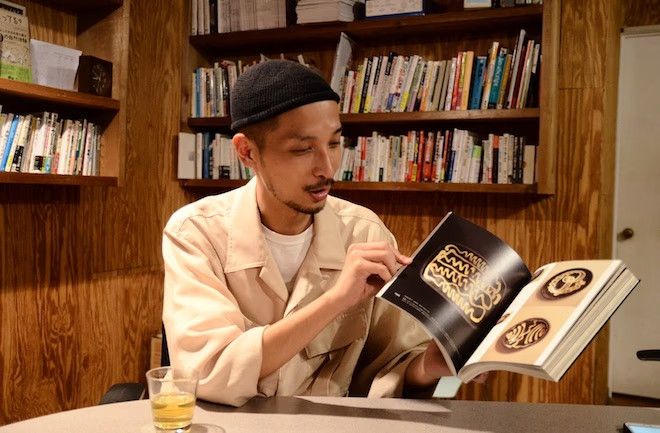
 Murakami
MurakamiIt was also featured in the folk art book that you introduced at a previous reading group .
 Haga
HagaThat's right. It's like a genre or technique within folk craft pottery. This book introduces it in a systematic way.
 Standing side
Standing sideRecently, I think they held a workshop at Ochikochi in Tokushima...
 Haga
HagaIt was at Tonokin that I bought my first slipware. It was the store that sparked my interest in Mingei.
After the reading group
The dining room reading group proceeded while munching on delicious food. It was a time that conveyed the sense of distance between each food, from the modest dining table of the swordsman father and son, to the exquisite hotpot enjoyed by a large group, to the selection of dishes that focused on the dishes used to serve the food. Delicious food makes people happy, doesn't it?
I wonder what the next theme will be. See you next time!
